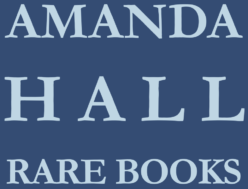Lettre à un Amateur de la Peinture avec des Eclaircissemens Historiques sur un Cabinet et les Auteurs des Tableaux qui le composent. Ouvrage entremêlé de Digressions sur la vie des plusieurs Peintres modernes. Dresden, George Conrad Walther, 1755.
First Edition. 8vo (188 x 120 mm), pp. [iv], 368, [14], the preliminary leaves including the frontispiece illustration, text fairly heavily browned, uncut throughout, in the original drab boards, spine lettered in ink.
An attractive, unsophisticated copy of the first edition of ‘Lettre à un Amateur de la Peinture’ by Christian Ludwig von Hagedorn, one of the most important art historiographers of the Enlightenment. A diplomat and director of the royal picture collection in Dresden, Hagedorn also assembled a significant collection of paintings, which are described and offered for sale in this work. Hagedorn’s ‘Lettre’, which occupies the first twenty pages, is followed by ‘Eclaircissemens historiques’, by Franz Christoph Janneck, the Austrian painter known for his paintings of festive gatherings who was much admired by Hagedorn. Janneck provides a description of the works in Hagedorn’s private collection, along with a series of biographical sketches and anecdotal digressions about various other painters. Janneck provides a wealth of information about both greater and lesser artists: the index designates those painters represented in the collection as well as other artists discussed in the digressions. Those painters thought to feature for the first time in a volume about painting are marked with an asterisk.
The frontispiece is an etching by Pierre-Jules Hutin (ca. 1720-1763), notable for its inclusion of a female figure engaged in aesthetic debate. The engraving depicts an artist’s studio with two groups of figures deep in discussion. In the foreground is a painting of Leda and the Swan with three figures clustered around it. Standing immediately next to the painting is a woman intently discussing the painting with two male connoisseurs. The more elegant of the men is seated, the other man holds up a glass to the painting and the woman is holding either a pointer or a paint brush.
Cicognara, Catalogo ragionato dei libri d’arte e d’antichità posseduti dal Conte Cicognara, Bologna 19798, no. 1162.
